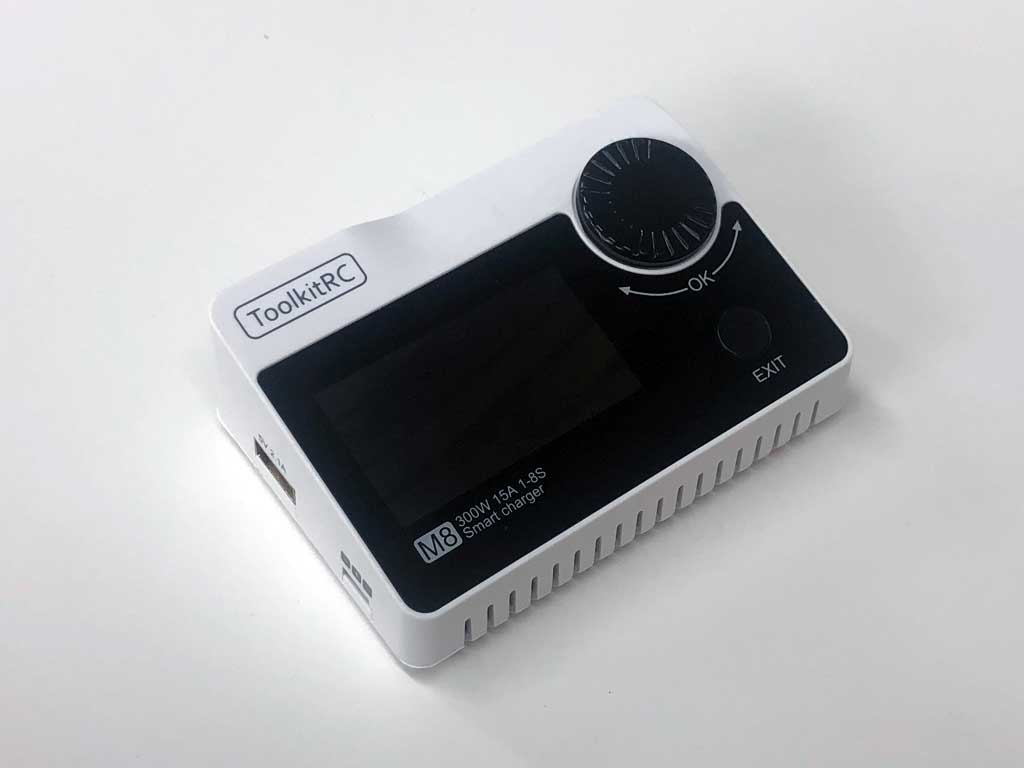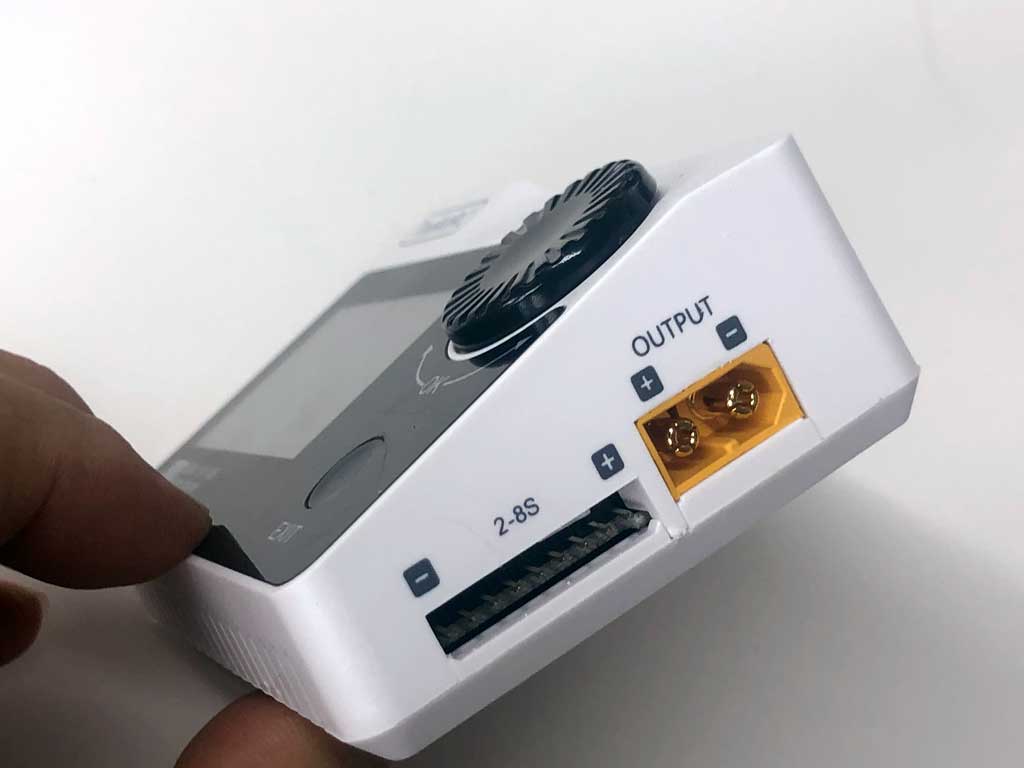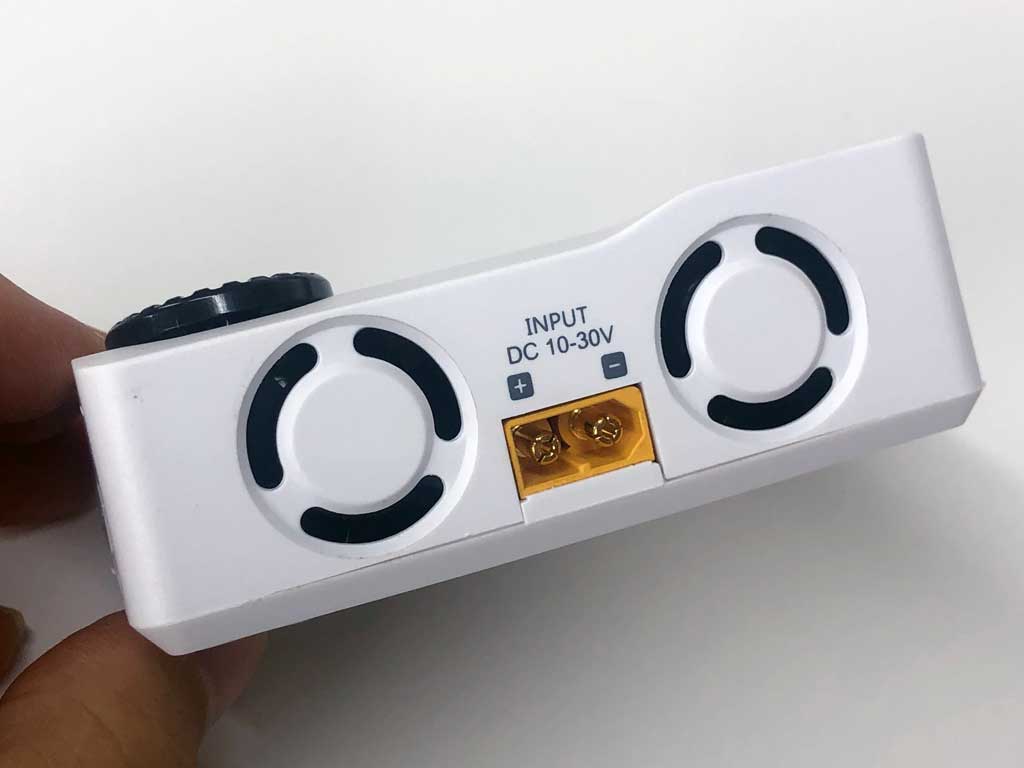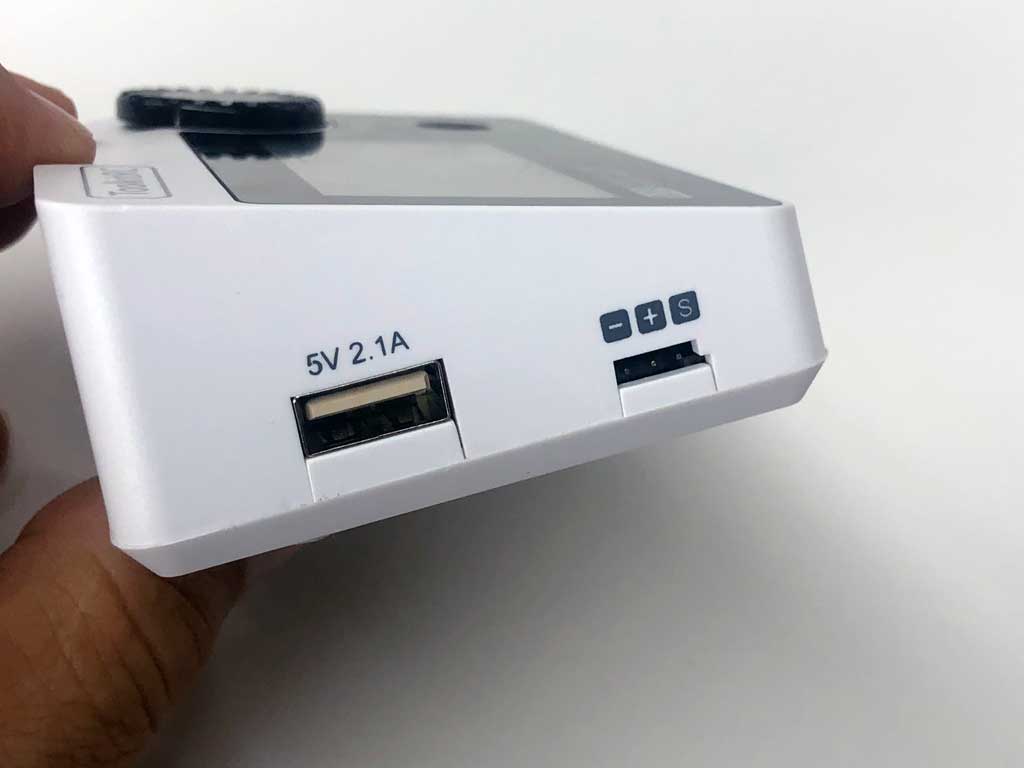Most of us acquire our first battery charger as part of another purchase. Perhaps along with an X-Maxx or with one of the lovely miniature models as produced by E-Flite. Before long it dawns on us we need something a bit better. So the next charger costs something less than $100 and we're happy.

But as your needs/usage evolves, the next step for many is a dual-channel charger (two chargers in one). With one of these, one box has two chargers, (a right and a left). And each is capable of independently charging/discharging packs of the same (or different) capacities and voltages - at the same time. Sweet!
These dual-side chargers are neat and a serious leap ahead of your first charger. That one was usually something of a el cheapo one-trick-pony. E.g., optimized to cheaply charge an 8S or a 4S LiPo-pack, or whatever. However, along with being two chargers, you get the added capability to charge various other chemistries.
Chemistries and power supplies
Chemistries in batteries may include all of the nickel family (NiCd and NiMH), all the lithium family (LiPo, LiIon, and LiFePO4), and even lead acid batteries (Pb) of the type for an electric starter. The best of bred choices often cost somewhat north of a $100 . . . and $200-300 is not unusual. Strikes me as rather a lot to have all my eggs in one basket, you?
Note: along with this, most folks also step up to a real power supply, e.g. spending another $100 for a bench-top supply to produce plenty of current at 12V in the workshop. Or, they perhaps opt for a native 110AC charger (and there are chargers with both 12VDC and 110VAC inputs). Whatever. I prefer 12VDC input and a separate supply (again, I'd rather not have all my eggs in one basket).

Recapping - tactics vs strategy
So this was my path as well because I once purchased chargers at what I think of as, at a tactical level, e.g. filling the need of the moment. This, without giving the decision a whole lot of further thought.
But then one of my fancy $200 chargers died. Both sides, too, because what actually died was some common component (common as in necessary for the function of both chargers, not as in ordinary). Suddenly, I found myself without a charger, it was long out of warranty, and I had to resort to my original charger. Suddenly I really realized the limitations of that Mickey Mouse included-charger in a new way. Yup, instead of having a nice dual-charger, I had nothing! Grrr.
So most charger-purchases are tactical decisions; what do I need right now? But a more strategic view may result in your deciding several inexpensive individual chargers deliver better redundancy and flexibility for charging/discharging several packs at a time. This may better suit you! It did me.

- This ToolkitRC M8 charger is a sweet little charger that's very capable
So what's a decent charger cost? Sub-$50 in my experience. The ToolkitRC M8 charger depicted above, and which is one I favor (enough so I own about 10 of them) does a marvelous job. Moreover, if one takes a crap, no big deal, I have plenty of others to take up the slack (none have, but the point remains).
Note: they offer a fancy dual-side charger as well. One that features both 110VAC and 12VDC input, but I stick by these M8 units. Further to this, we're not a full-line dealer for ToolkitRC because the only products I offer are those 'I' actually use because we're not a hobby shop. Anyway, I love this compact charger!

ToolkitRC M8 charger
Is there a downside to the M8? Sure, chiefly in that unlike a lot of chargers that rely on banana plugs for the main output, they use an XT60. Why not a banana plug, or an EC5 or a WR Deans UltraPlug (also known as a T-connector)? I theorize they don't use the banana because they like the current handling capability of the XT60 better. And the others represent competitor's products.

- Along with the balance port (1-8S JST-XH) the output is an XT60 (60A)
So the reason for their using an XT60 may have to with Horizon controlling the EC5 series (naturally, they don't want to be beholden to a competitor). That, and the Deans Ultra is kind of limited in terms of a growth path in that they don't offer a step up in current handling beyond 50A.
Input side
The M8 use the ubiquitous XT60 on the input side as well. Many (most) others use the typically banana plug, once again. Why not use bananas? Same reason, power handling limitations is my guess.

- The M8 uses the ubiquitous XT60 for input as well - rated from 10-30VDC
Meanwhile, just like the EC-series is available in a smaller one (the EC3, rated at 30A) versus the EC5 (50A), the XT-series are available in additional capacities.
While I use XT30, XT60, and XT90 (representing 30A, 60A, and 90A of current handling capability), there's a cute little XT15. Anyway, for my purposes, these three sizes serve me well enough. Moreover, in addition to being pretty good, XTs are also cheap and widely available. There's one other trick up the M8's sleeve, which I appreciate. It has a 2.1A 5VDC output via USB for charging a phone or tablet. And it outputs receiver level voltage with a JR-type connector. This is handy!

- The ability to also field charge my phone is a winner!
With regard to the M8 and the use of XT60 connectors, good and cheap is always a winning combination. Works for me!

Recommendations
So here's what I recommend for charging your batteries; an M8 plus a small handful of the various XT connectors. These links conveniently open a new browser tab so you don't loose your place.

Random thoughts on buying connectors
As for why you'd buy just the connectors to fill your connector-drawer instead of complete cable assemblies? That's simple; partly it's because you don't know what you're going to need in future. Also because you don't want to stop to buy some when you're in the heat of battle! But mostly it's because you can't predict what you may find yourself needing.
For example, I just yesterday bought a nifty Apprentice S 15e to teach my grandsons to fly. This sweet ready to fly model comes equipped with EC3 connectors. So I can whip up a charger cord in minutes by unspooling a few feet of lamp cord and reaching for an EC3 from the drawer instead of surfing to Amazon or visiting the hobby shop. Easy peasy!
Note: I actually do have small parts drawers for all of these connector-types (and others). Also, I'd rather roll-my-own because the ready-made charge adapter cables aren't usually aren't long enough to suit me. Can't speak for you but a 12" adapter cable just doesn't cut it with me. Anyway, most of mine are about 1m long, and some are longer!
As for the M8 charger, it uses XT60 connectors for both the in/out, and you'll want to go from that to: XT30, XT60, XT90, EC3, EC5, Deans Ultra, JR-type, or whatever. And here's the beauty; ordinary 18/2 lamp cord (2-conductor, 18 gauge, or 18AWG) is pennies per foot. And can be readily purchased at Ace Hardware.
Believe me, using cheap lamp cord for the light duty of charging beats the heck out of pricey silicone jacketed wire created for much greater loads (and costing appropriately more). E.g. this is a situation that doesn't call for throwing cubic money at the problem, capice?

Summary
For nearly all modelers, a strategic buying plan for chargers works out better than a tactical plan. My M8 chargers are a strategic buy that sees me using several individual units, each relatively inexpensive vs a pricey all-in-one solution.
Several of these give me the flexibility to handle several packs at once, and didn't leave me relying on a single piece of equipment. But as usual, the answer to whether this is the right formula for you is . . . it depends!